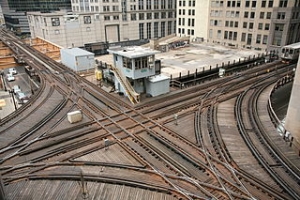
While hundreds of infrastructure projects languish for want of funding, experts say that last year alone, the top 30 global infrastructure equity funds raised enough capital to finance $724 billion dollars’ worth of these projects. Funding is not a problem!
Interestingly enough, the United States was home to five of the top 10 and 10 of the top 20 largest global infrastructure equity funds in 2015. U.S.-based institutions also ranked first among the top funds for capital raised – $71.9 billion – and first in percentage of the total capital raised collectively by the funds – nearly 40 percent.
According to the Reason Foundation, in the decade ending in 2015, approximately $350 billion was raised by infrastructure equity funds – enough to support $1.4 trillion in projects. In spite of all the available funding, most large public projects are either languishing or moving so slowly most people wonder if anything will ever happen.

Photo by Daniel Schwen
Many public officials at the state level blame a stagnant gasoline tax rate, more fuel-efficient vehicles and fewer drivers for decreasing gas tax revenue that historically had been used to fund large transportation projects. They point to inadequate public funding and hope no one asks why they are so reluctant to engage collaboratively with private-sector partners. Municipal leaders delay large, critical water projects by also saying they don’t have adequate funds available. They, too, seem reluctant to collaborate with the private sector. University executives are among the most willing to launch collaborative initiatives and there are hundreds of incredibly successful public-private partnerships (P3s/PPPs) related to higher education.
Good things happen when large infrastructure projects are launched. Surely our governmental leaders will get us there soon. Both presidential contenders support P3s and public officials at the federal level of government seem to realize that collaboration is destined to become the norm. Both political parties understand that as new infrastructure projects are launched, trillions of dollars will begin to circulate through the economy and thousands of jobs will be created. Public assets, once neglected, will get attention that is long overdue and the country will retain its global competitiveness. That’s all very good.
But, because public-private partnerships have been slow to be supported by state and local governments, the investment funds cannot find enough projects to support. Many believe these funds could soon begin supporting opportunities in other countries. If this funding dries up in the U.S., motorists will continue to sit in traffic for endless hours, citizens will continue to stress over bridge safety, American airports will be inferior to those in Europe and other countries, industry may stop investing in expansion and school officials will continue to push off major maintenance work that has already been delayed for decades. What a strange dilemma! Something needs to happen rather quickly.
